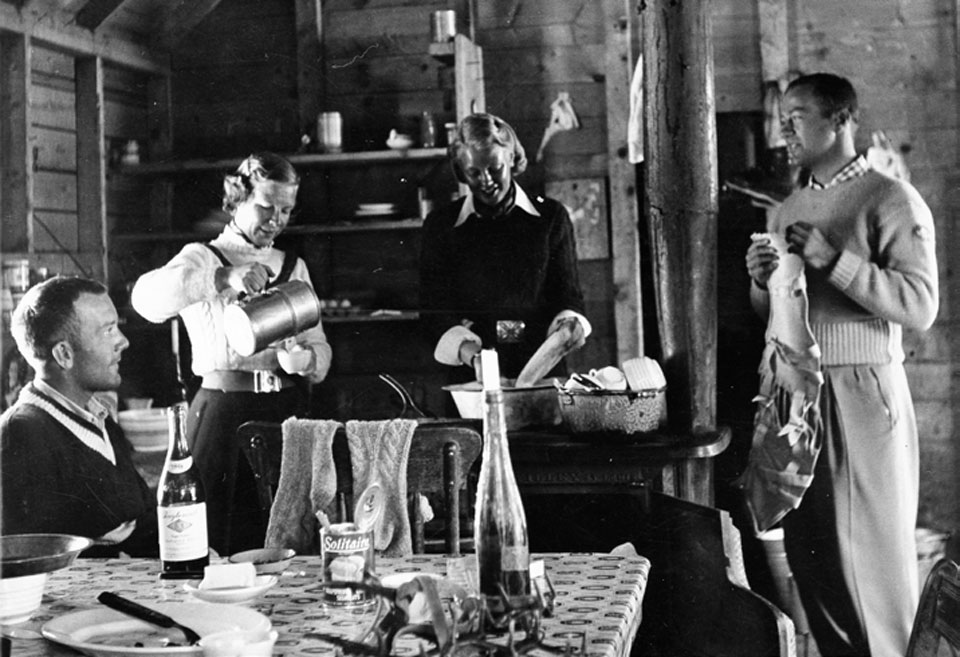Head for the Hills
Aspenites have always loved their dinner parties—no matter how rustic the setting
Hut trip menu planning involves careful mental accounting: pack weight and convenience versus epicurean enjoyment. While provisions in the early days of backcountry skiing were likely simple (things that could be easily transported, preserved and prepared), the wine bottles in the above photograph indicate a rule of hut trip provisioning: Appetite sometimes trumps inconvenience and certain libations are a necessity.
Huts (a mix of private buildings and discarded mining or homestead structures) have been used for backcountry ski touring in the Aspen area since the 1930s. Many were eventually managed by various groups who coordinated and supplied cabins with upkeep supported by use fees. An announcement in the Aspen Daily Times on September 25, 1947, shared improvements made to the Tagert Ski Hut in Montezuma Basin, with two men arriving to “build an insulated cellar for the cabin for food storage and to fill it with a large stock of staples.” As part of the National Ski Association, many huts were also stocked with “all of the necessary dishes, cutlery and cooking utensils.”
Stocked staples would have included sugar, salt and coffee. Later, canned goods like vegetables, evaporated milk and tinned fish were cached at organized huts. According to the above article, prices were marked on cans in the food cellar; if consumed, “skiers returning from the basin will pay all charges” to the coordinator.
Snow melted for water, wood stoves and ovens in some huts made cooking possible. With basic supplies awaiting the skiers, perhaps their packs were filled with fresh, seasonal ingredients (maybe even game procured on fall hunting trips) or pre-prepped dishes ready for reheating.
Occasionally groups were able to coordinate delivery of provisions. Such was the case for an all-girls spring ski tour featured in a 1952 Ski Magazine photo essay. The late Stuart Mace, steward of Tagert Hut at the time, was the only “boy” allowed, albeit briefly. Mace transported supplies with the assistance of his dog team from his home at Toklat in Ashcroft. These days, hut goers are known to pack in gourmet meals and all manner of specialty foods. Ski snacks aside, anything short of multiple-course spreads might well be considered unworthy of hut dining tables. | eA
Edible Traditions is produced by the Aspen Historical Society. For access to the full online archives, including more than 10,000 historic images, visit AspenHistory.org or call 970.925.3721.





